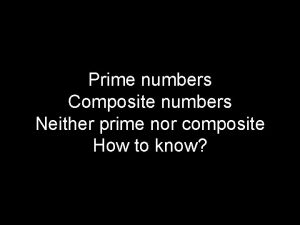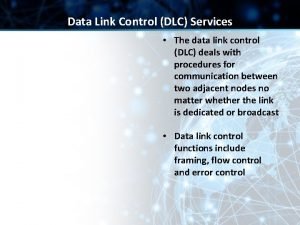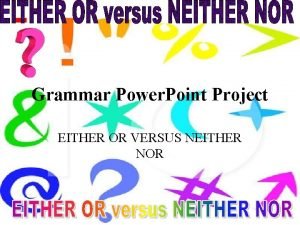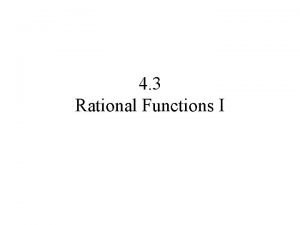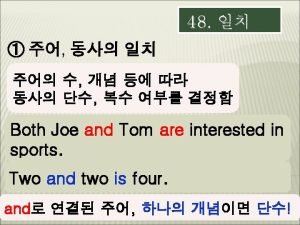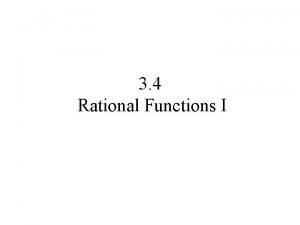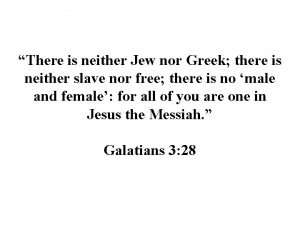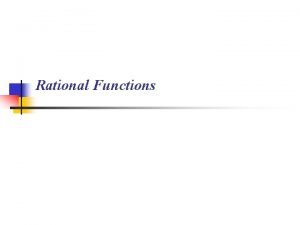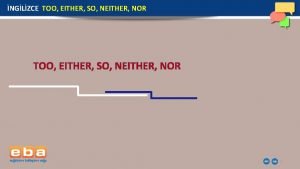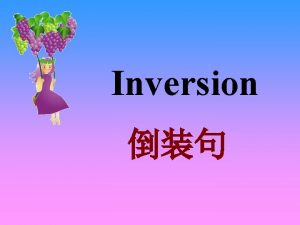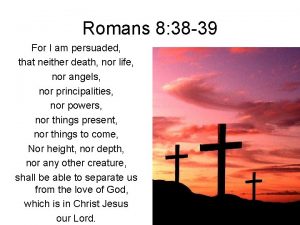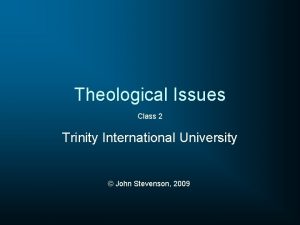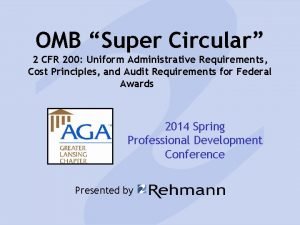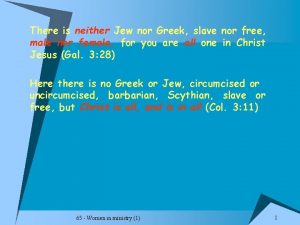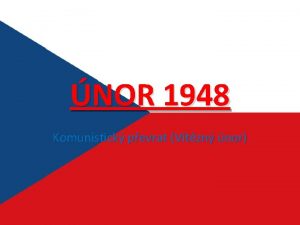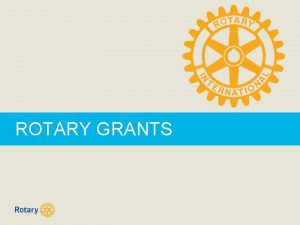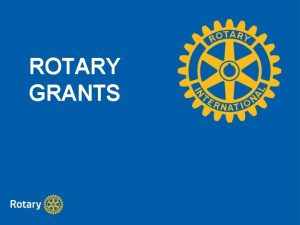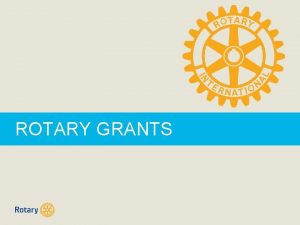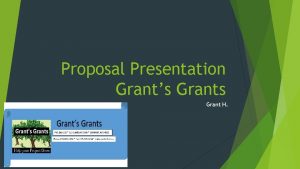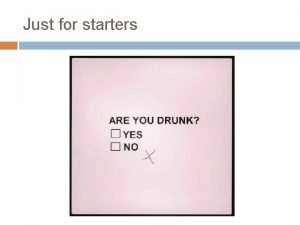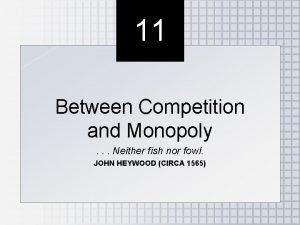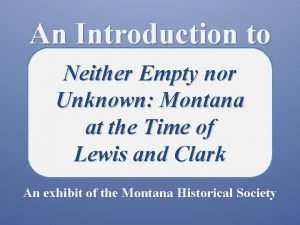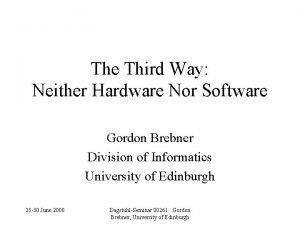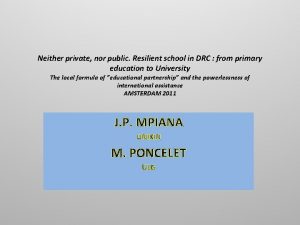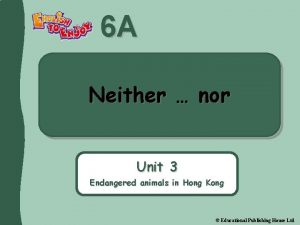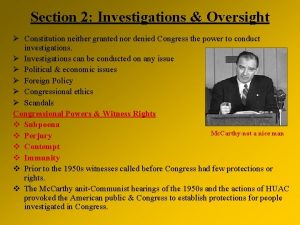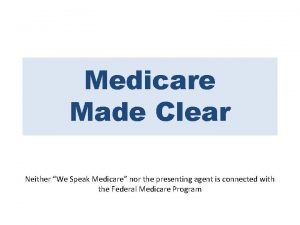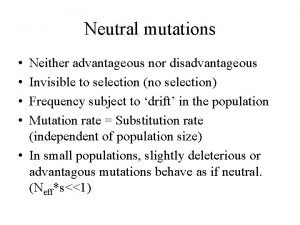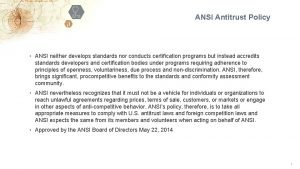Uniform Guidance for Grants Neither Uniform nor Guidance



































- Slides: 35

Uniform Guidance for Grants Neither Uniform nor Guidance

Previous Grant Guidance • Separate regulations for different purposes and types of recipients • Institutions of Higher Education were subject to three separate OMB (Office of Management and Budget) circulars – Administrative Requirements (A-110) – Cost Principles (A-21) – Audits (A-133)

New Grant Guidance • Combines eight federal circulars into a single document to be used governmentwide for managing financial assistance awards (grants and cooperative agreements)

Background of reform • 11/23/09 Executive Order 13520 on Reducing Improper Payments • 2/28/11 Presidential Memorandum on Administrative Flexibility, Lower Costs, and Better Results for State, Local, and Tribal Governments • Better target financial risks and better direct resources to achieve evidencebased outcomes

Reform process • Council on Financial Assistance Reform (COFAR) established October 2011 – Interagency group of Executive Branch officials to coordinate financial assistance reform – Represents major funding agencies • Final guidance published in Federal Register 12/26/13 • Interim final rule published 12/19/14

Results • Uniform Administrative Requirements, Cost Principles, and Audit Requirements for Federal Awards; Final Rule – Super Circular / Omni Circular – OMB A-81 – Uniform Guidance (UG) – 2 CFR 200 (Code of Federal Regulations) • Each agency’s implementation

Effective Dates • New awards issued after December 26, 2014 subject to UG terms and conditions • Funding increments and modifications may also be subject to UG if the awarding agency considers this an opportunity to change award terms and conditions

Effective Dates • Audit requirements effective for fiscal years beginning after December 26, 2014 – Kent State FY 2016 (July 1, 2015 - June 30, 2016) • Implementation of procurement standards may be delayed one full fiscal year – Kent State FY 2017 (July 1, 2016 – June 30, 2017)

Does it apply? • During this time of transition watch award documents carefully for any changes • Sponsored Programs will be noting the applicability of Uniform Guidance terms on the fund request and/or spending plan for awards as they become effective

Uniform? • UG is intended to be a substantially uniform approach to federal funding administration. • Agencies may implement waivers or variances through their individual policies and procedures. • Exceptions throughout guidance for different types of recipients. • Imperative to pay attention to the terms of a specific award and the related guidance offered by the funding agency.

Agency-Specific Regulations • 12/19/14 Joint Interim Final Rule implements UG for all Federal awardmaking agencies (240 pages) • Incorporates UG into each agency’s regulations -- separate CFR reference • Includes OMB-approved exceptions for agencies • NSF implementation through policy

Guidance? • Guidance to federal agencies in their implementing regulations • Codified in Code of Federal Regulations at 2 CFR 200 and separately in each agency’s implementing regulations • Not optional

Guidance? • Language does allow for suggestions beyond regulations – Must indicates requirements – Should indicates best practices or recommended approaches

Pyramid of requirements Uniform Guidance

Outline of Uniform Guidance • • Subpart A: Definitions Subpart B: General Provisions Subpart C: Pre-Award Subpart D: Post Award Subpart E: Cost Principles Subpart F: Audit Requirements Appendices I - XI

Significant Changes • • • Cost Sharing or Matching Procurement Subawards Selected Items of Cost Prior Approvals and Expanded Authorities

Cost Sharing or Matching • Voluntary committed cost sharing is not expected and cannot be used as a factor during the merit review of proposals • Criteria for considering voluntary cost sharing must be explicitly described in the notice of funding opportunity • Prior approval of agency must be given to use unrecovered indirect costs as part of cost sharing or matching

Procurement • Taken primarily from A-102 for State and Local Governments • Includes significant changes for Institutions of Higher Education • Grace period of one full fiscal year for implementation – Required by July 1, 2016 – Kent State will revised policies and procedures

Procurement Methods • Micro-purchase: ≤$3, 000 • Small purchase: >$3, 000 ≤$150, 000 – Price or rate quotations must be obtained from an adequate number of qualified sources • Sealed bid: >$150, 000 • Competitive proposal: >$150, 000 • Noncompetitive proposal – Approval for sole source through Procurement

Procurement documentation • Must maintain records sufficient to detail the history of each procurement – Rationale for method – Selection of contract type – Contractor selection or rejection – Basis for contract price

Subrecipient vs. Contractor • Determination on case-by-case basis depending upon role in project – Subrecipient: purpose of carrying out portion of award; creates assistance relationship – Contractor: purpose of obtaining goods and services for non-Federal entity’s use in project • Substance of relationship more important than the form of agreement • Kent State checklist to determine

Pass-through Entity Requirements • Prime recipient is pass-through entity • Clearly identify each subaward with specific information about the prime award • Use subrecipient’s federally recognized indirect cost rate – 10% de minimus indirect cost rate for entities who have never had a negotiated rate – unless program statute limits

Pass-through Entity Requirements • Evaluate subrecipient’s risk of noncompliance – Determine appropriate monitoring – Kent State risk assessment • Monitor subrecipient activities – Review financial and programmatic reports – PI sign-off on invoices before payment – Verify and follow-up on annual audits – Additional steps when high risk

Cost Principles • Basic Considerations still the same – Allowable – Reasonable – Allocable • May seek prior written approval of awarding agency in advance of incurrence of special or unusual costs to avoid subsequent disallowance

Indirect (F&A) Costs • Negotiated rates must be accepted by all Federal awarding agencies • May use different rate for a class of awards only when one of the following – Required by Federal statute or regulation – Approved by agency head based on documented process • Pass-through entities must follow with subrecipient’s negotiated rate

Personal Services (personnel) • Reasonable for services rendered • Conform to written policy of non-Federal entity and consistently applied to all activities regardless of funding source • Standards for documentation less prescriptive – Effort Certification meets requirements – Cost share salaries must also be documented

Administrative/Clerical Salary • Generally indirect cost and should not be directly charged • May be directly charged if all criteria met: – Integral to project or activity – Involved individual(s) can be specifically identified with the project or activity – Explicitly included in approved budget or have prior written approval of awarding agency

Computing devices < $2, 500 • May be directly charged if all criteria met – Essential and allocable to the project – Project does not have reasonable access to other devices or equipment that can achieve same purpose (not convenience/preference) – Items > $2, 500 are considered equipment and follow equipment rules for direct charging • Include in proposed budget with justification or request through rebudget

Participant Support Costs • Allowable with agency prior approval • Not routinely included on research projects but may if an education or outreach component is included • Excluded from indirect costs • Agency approval needed before rebudgeting to another category

Visa Costs • Not previously addressed directly • Short-term travel visa costs allowable if all criteria met – Critical and necessary to project – Allowable by agency – Consistent with Kent State policies/practices • Different from long-term immigration visas

Prior Approvals • Expanded authorities were incorporated into research terms & conditions – Waiver of some prior approvals – Rebudgeting – Initial no cost extension – Pre-award costs • Not reflected in UG

Prior Approvals • Research terms & conditions working group updating to incorporate UG • No completion date at this time • Some prior approvals are waived in agency specific regulations but less comprehensive at this point

Kent State Implementation • Look for information provided on spending plan including applicability of UG • Include as much detail as possible in proposal budget and justification for agency approval • Indirect Cost Charge Exception Form • Institutional Prior Approval Form (IPAF) to request rebudget or other changes

Resources • COFAR https: //cfo. gov/cofar • 2 CFR 200 http: //www. ecfr. gov/cgi-bin/textidx? SID=6530 c 2 e 6 fcaebd 23 e 97969 e 4 cff 8 41 fb&node=pt 2. 1. 200&rgn=div 5 • OMB Circulars http: //www. whitehouse. gov/omb/circulars

Questions? • Lori Burchard – lburchar@kent. edu – 330 -672 -7946 • Sponsored Programs – 330 -672 -2070 • Grants Accounting
 Angareion
Angareion Number is neither prime nor composite
Number is neither prime nor composite Dlc protocol
Dlc protocol Either or vs neither nor
Either or vs neither nor Rational fucntion
Rational fucntion William shakespeare educational background
William shakespeare educational background Either a and b
Either a and b Asymptote that is neither horizontal nor vertical
Asymptote that is neither horizontal nor vertical There is neither greek nor jew
There is neither greek nor jew Vertical asymptote
Vertical asymptote Neither better nor worse
Neither better nor worse Neither so
Neither so Neither nor inversion
Neither nor inversion Nor death nor principalities
Nor death nor principalities Nor death nor principalities
Nor death nor principalities Nor death nor principalities
Nor death nor principalities Direct and indirect guidance
Direct and indirect guidance Balanced occlusion
Balanced occlusion 2 cfr 200 uniform guidance
2 cfr 200 uniform guidance 10% de minimis indirect cost rate uniform guidance
10% de minimis indirect cost rate uniform guidance Chemistry homogeneous mixture
Chemistry homogeneous mixture Aliran seragam
Aliran seragam Linear motion images
Linear motion images How do you classify uniform and non-uniform mixtures?
How do you classify uniform and non-uniform mixtures? Bris för vuxna
Bris för vuxna Mat för idrottare
Mat för idrottare Geometriska former i förskolan
Geometriska former i förskolan Publik sektor
Publik sektor Ledarskapsteorier
Ledarskapsteorier Datorkunskap för nybörjare
Datorkunskap för nybörjare Kvinnlig mantel i antikens rom
Kvinnlig mantel i antikens rom Humanitr
Humanitr Steg för steg rita
Steg för steg rita Formuö
Formuö Ministerstyre för och nackdelar
Ministerstyre för och nackdelar Claes martinsson
Claes martinsson

